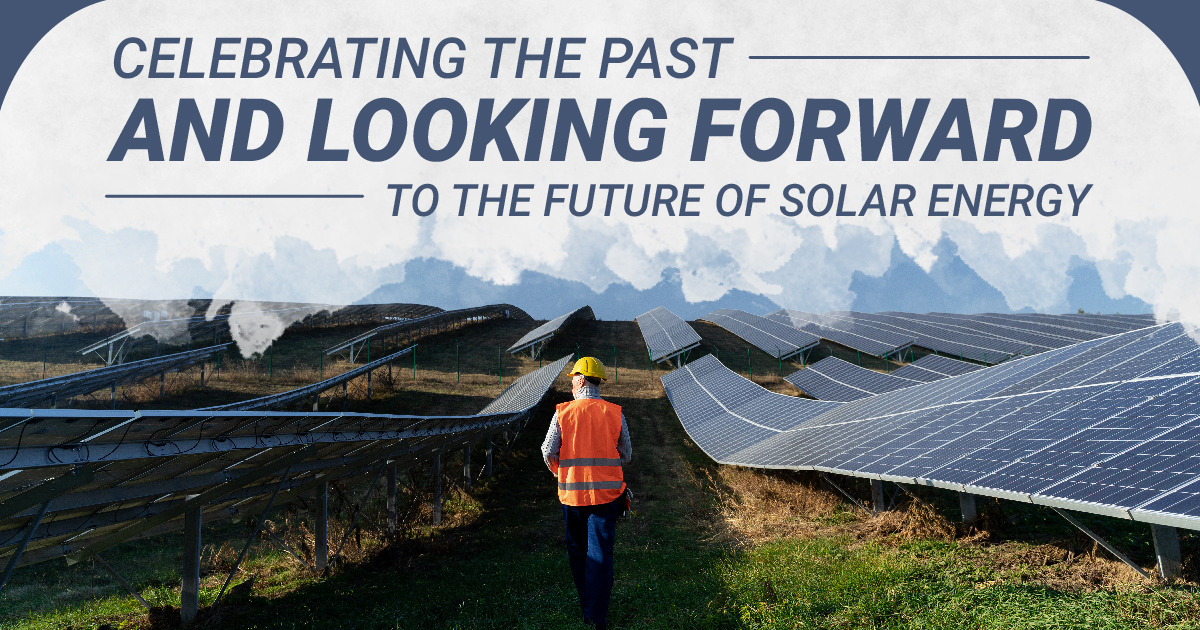To better understand solar technology, let’s start an exciting journey learning about the history of solar energy and the most recent developments. In this post, we’ll celebrate the great advancements achieved in the past while looking forward to the growing future scope of solar energy. Since the demand for solar power is constantly rising and solar system cost is reducing, solar power is considered the leading player in reshaping the energy landscape of the whole world.
When was Solar Energy First Used?
The initial use of solar energy dates back to the early 7th century B.C. when humans used solar radiation (sunlight) to light fires with magnifying glass materials or shiny materials. When sunlight was reflected onto these objects, it produced fires. Later, solar energy was discovered in the 3rd century B.C. by the Greeks and Romans. They harness solar energy with mirrors to light torches for their religious ceremonies.
Chinese civilization documented the utilization of mirrors for the same purpose in 20 A.D. The well-known Roman bathhouses in the 1st to 4th centuries A.D. had massive south-facing windows to get the sun’s warmth.
Later in the 1200s A.D., Anasazi (ancestors of Pueblo people) in North America reside in south-facing abodes on cliffs to get the sun’s warmth in winter. In the late 1700s and 1800s, sunlight was harnessed to generate solar-powered steamboats and power ovens for long voyages.
The Invention of Solar Panels
A solar panel, or photovoltaic module uses sunlight as an energy source to produce direct current electricity. Most people planning a solar energy setup prefer solar panel installation. There is debate about the invention of solar panels.
According to some people, the solar cell was discovered by the French scientist Edmond Becquerel. However, some people credit Charles Fritts with the invention of the first commercial solar panel in the early 1880s. He developed solar cells by coating selenium with a thin gold layer. This cell had an efficiency of 1-2%.
Most modern solar cells which are made of silicon, have an energy conversion rate of 15-20%. That’s a reason the creation of silicon photovoltaic or PV cells by Daryl Chapin, Gerald Pearson, and Calvin Fuller in 1954 was considered the true invention of solar panels.
What makes the solar growth story of India a remarkable success?
As per MNRE data, 8,488 MW of solar rooftop generation capacity had been installed in India till the end of February 2023 as against 7,520 MW in September 2022. This tremendous growth has been achieved for the following three reasons –
A risk-free development model
The model of India for derisking of large solar farms development is a huge success story including evacuation infrastructure, ease of land, and PPAs (Power Purchase Agreements). ISA, launched by Indian PM Narendra Modi in 2015, is a treaty-based intergovernmental organization of around 123 sunshine nations. It looks forward to working on this model and developing large solar farms with the entire world.
Strong regulatory support
The third reason behind the great success story of solar growth is the strong regulatory support. Initially in 2009, when the installed solar capacity of India stood at 2 MW, investors approach CERC (central electricity regulatory commission) for a reference benchmark cost for starting the projects. It results in Rs.17.14 per unit. That starting point is today remarked as the solar success story. The waiver of transmission charges is another regulation that supported incentivized development of new solar capacity.
A recent increase in solar rooftop installations
Over the past few years, India has done perfectly in solar rooftop installations. While there was less drive for a long time, India has started noticing a rise in solar micro grid installation. Over the past decade, many homeowners and businesses have installed solar rooftop panels on their building’s rooftops as a mainstream source of power. The improved efficiency, extended durability, and cost reductions have resulted in the widespread adoption of solar panels by millions of businesses and households worldwide.
How has Solar Technology Transformed Over Time?
In 1958, a small 1-watt solar panel was used by the Vanguard I satellite to power radios. In 1973, the University of Delaware constructed the first solar residence titled – Solar One. In 1981, Paul MacCready developed the first solar-powered aircraft named Solar Challenger that flew across the English Channel from France to the United Kingdom. Solar Impulse 2 is the most powerful and largest solar-powered airplane to complete the first zero-emissions flight.
In 2016, MIT researchers developed flexible and ultra-slim solar cells with 1.3 microns thickness. These cells are as lightweight as soap bubbles. So, there is a possibility of being used in some technologies like cell phones.
Solar Technology in Present Day
Beyond traditional household appliances, solar energy now has a wide range of connotations. In today’s world, it is being widely used in several industrial applications and power different electronic gadgets and techniques. For example, solar street lights, solar-powered electric vehicle charging stations, solar water pumps for agricultural use, solar-powered garden lights, solar telecommunication tower installation, and more.
The incentive programs are providing significant cost savings to homeowners seeking opportunities to reduce their energy costs and dependence on fossil fuels. The extensive solar growth is largely credited to the rapidly reducing costs, solar investment tax credit, and rising demand across the public and private sectors for green and renewable sources of energy.
The Future of Solar Power
Looking ahead, solar technology has a great future scope with exciting possibilities. The new generation of solar panels will push the boundaries of solar affordability and efficiency, and open up a new world of possibilities. Integration of solar energy into smart grids and developed highly efficient energy-storage system, the decentralized and resilient energy system has more promising potential.
If you want to join the exciting and inspiring journey of solar panels, get the installation of the most appropriate solar system for your power needs and reshape a sustainable future for all. Megamax Solar will help you to get a fast quote for solar installation.

